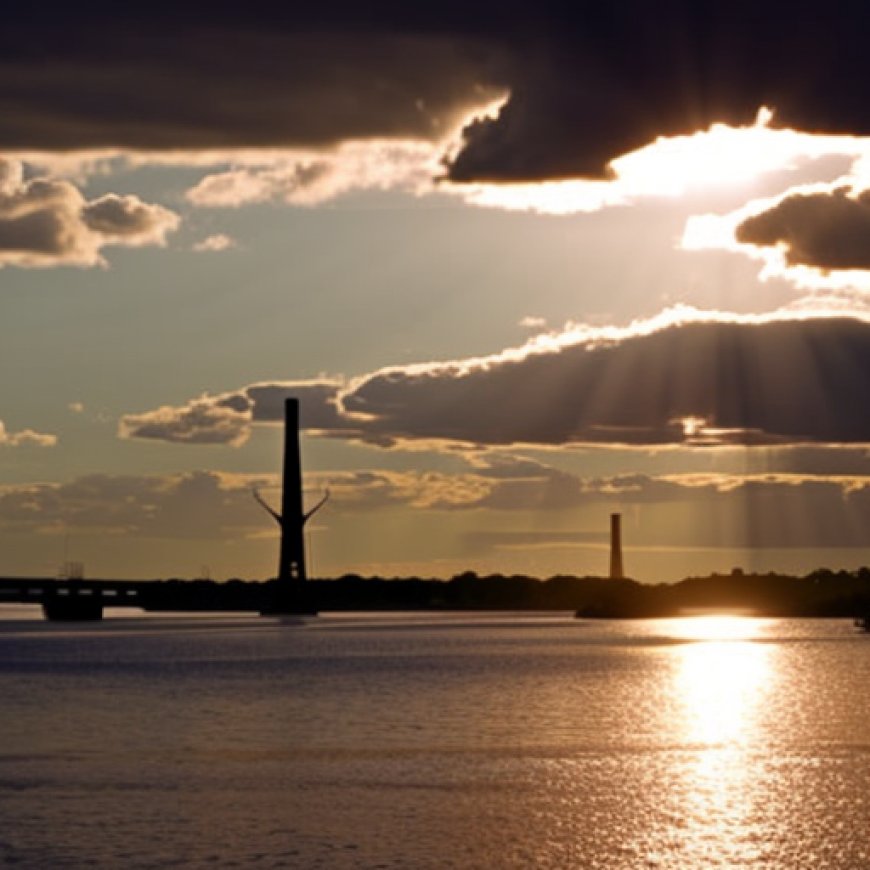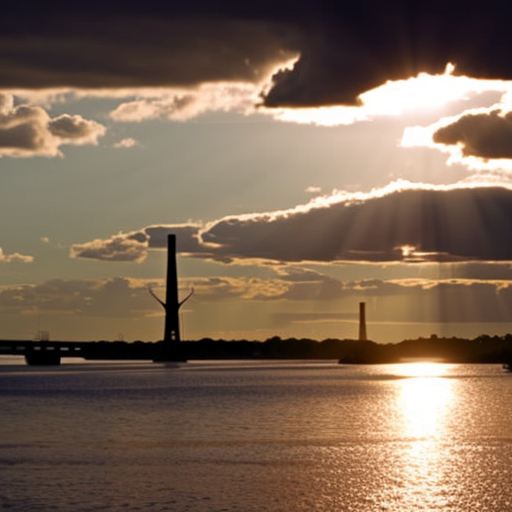Surge of saltwater up the Mississippi River threatens New Orleans water supply
Surge of saltwater up the Mississippi River threatens New Orleans ... WSWS


Record Low Mississippi River Levels Threaten Water Supply to New Orleans
Following several weeks of drought conditions in Southeast Louisiana, the Mississippi River has hit record lows. A surge of saltwater from the Gulf of Mexico now threatens the water supply to New Orleans and has already contaminated the water of towns to the south of the city near the Gulf Coast.
Climate Change and Saltwater Intrusion
Normally, the southerly flow of the Mississippi River into the Gulf would prevent saltwater from flowing upstream. However, climate change-influenced weather conditions, including record high heat and drought, have created potentially disastrous circumstances.
The denser saltwater has created a wedge that flows beneath the freshwater river and is creeping upstream into the water supplies for nearby towns. In a matter of weeks, it will reach New Orleans, threatening the city’s 300,000 residents with the loss of access to safe drinking water.
Response and Potential Lead Contamination
President Joe Biden declared a national emergency for the situation facing Louisiana after Governor John Bel Edwards requested assistance. Rationed bottled water and desalination units have been provided to affected areas, but the threat of lead contamination remains.
Lead pipes in New Orleans are still commonly used, and excess salt in the water could corrode these pipes, causing lead to leach into the water system. This poses a significant health risk, especially to children and vulnerable populations.
Impact on Agriculture and Infrastructure
The extreme drought has not only affected the Mississippi River but also regions north of Louisiana that feed into it. Outdated water infrastructure is at risk of being overwhelmed by the saltwater intrusion, which could disrupt access to fresh water and impact agricultural exports.
Long-Term Effects and Climate Crisis
Rising sea levels are causing the loss of marshland in Louisiana at an alarming rate. This, combined with record-breaking heat and extreme drought, highlights the worsening climate conditions caused by capitalist-driven carbon emissions.
The capitalist system’s pursuit of profit has led to environmental collapse not only in Louisiana but worldwide. Wildfires, flooding events, and crumbling infrastructure demonstrate the urgent need for socialist planning and resource allocation based on human need rather than private profit.
SDGs, Targets, and Indicators
-
SDG 6: Clean Water and Sanitation
- Target 6.1: By 2030, achieve universal and equitable access to safe and affordable drinking water for all.
- Target 6.3: By 2030, improve water quality by reducing pollution, eliminating dumping, and minimizing the release of hazardous chemicals and materials.
-
SDG 13: Climate Action
- Target 13.1: Strengthen resilience and adaptive capacity to climate-related hazards and natural disasters in all countries.
- Target 13.2: Integrate climate change measures into national policies, strategies, and planning.
-
SDG 15: Life on Land
- Target 15.1: By 2020, ensure the conservation, restoration, and sustainable use of terrestrial and inland freshwater ecosystems and their services.
- Target 15.5: Take urgent and significant action to reduce the degradation of natural habitats, halt the loss of biodiversity, and protect and prevent the extinction of threatened species.
Table: SDGs, Targets, and Indicators
| SDGs | Targets | Indicators |
|---|---|---|
| SDG 6: Clean Water and Sanitation | Target 6.1: By 2030, achieve universal and equitable access to safe and affordable drinking water for all. | Not mentioned in the article. |
| SDG 6: Clean Water and Sanitation | Target 6.3: By 2030, improve water quality by reducing pollution, eliminating dumping, and minimizing the release of hazardous chemicals and materials. | Not mentioned in the article. |
| SDG 13: Climate Action | Target 13.1: Strengthen resilience and adaptive capacity to climate-related hazards and natural disasters in all countries. | Not mentioned in the article. |
| SDG 13: Climate Action | Target 13.2: Integrate climate change measures into national policies, strategies, and planning. | Not mentioned in the article. |
| SDG 15: Life on Land | Target 15.1: By 2020, ensure the conservation, restoration, and sustainable use of terrestrial and inland freshwater ecosystems and their services. | Not mentioned in the article. |
| SDG 15: Life on Land | Target 15.5: Take urgent and significant action to reduce the degradation of natural habitats, halt the loss of biodiversity, and protect and prevent the extinction of threatened species. | Not mentioned in the article. |
Based on the information provided in the article, there are no specific indicators mentioned or implied that can be used to measure progress towards the identified targets. The article focuses more on the current situation and potential consequences rather than providing specific data or measurements related to the targets.
Behold! This splendid article springs forth from the wellspring of knowledge, shaped by a wondrous proprietary AI technology that delved into a vast ocean of data, illuminating the path towards the Sustainable Development Goals. Remember that all rights are reserved by SDG Investors LLC, empowering us to champion progress together.
Source: wsws.org

Join us, as fellow seekers of change, on a transformative journey at https://sdgtalks.ai/welcome, where you can become a member and actively contribute to shaping a brighter future.







